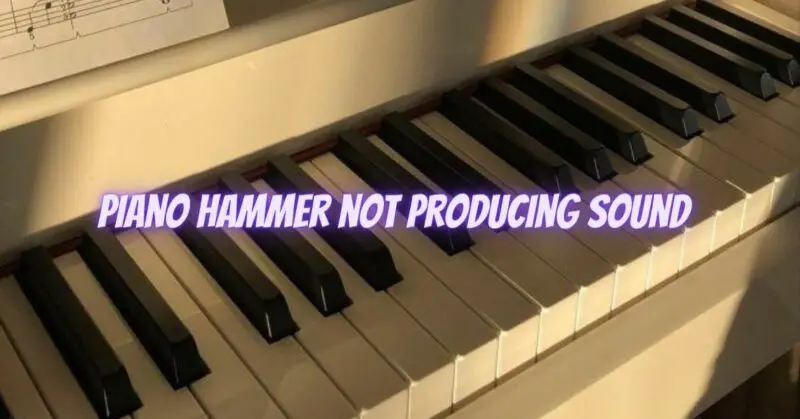A piano is a complex instrument with many moving parts, and occasionally, you might encounter issues where certain piano hammers fail to produce sound when struck. This can be frustrating for pianists and may disrupt the overall playing experience. However, there are several common causes for this problem, and in this article, we’ll explore those causes and provide potential solutions to resolve the issue.
- Worn or Damaged Hammer Felt: One of the most common reasons for a piano hammer not producing sound is wear or damage to the hammer felt. Over time, the felt can become compressed, grooved, or worn, affecting its ability to effectively strike the strings and produce sound.
Solution: In such cases, the piano technician may need to reshape or replace the hammer felt to restore its functionality. Proper voicing and needling techniques can also be used to rejuvenate the felt and bring back its tonal qualities.
- Broken or Dislodged Action Part: If a piano hammer is not striking the strings, it could be due to a broken or dislodged action part, such as a flange, bridle strap, or repetition lever. These components play a crucial role in transmitting the motion from the key to the hammer, and any damage or misalignment can result in a lack of sound production.
Solution: A qualified piano technician should inspect the action thoroughly and identify any broken or misaligned parts. Replacing or repairing the damaged components will restore the hammer’s functionality.
- Sticky Key: A sticky key occurs when the key does not return to its original position after being pressed. This issue can prevent the hammer from striking the strings as intended.
Solution: To address a sticky key, the technician will need to clean and lubricate the key’s contact points and action parts. This will ensure smooth key movement and proper hammer activation.
- String Breakage: If a string has broken or become detached, the corresponding hammer will not produce sound when struck.
Solution: A broken string needs to be replaced by a piano technician. String replacement requires careful matching of the gauge and tension to ensure the piano’s proper tonal balance.
- Damaged or Misaligned Hammer Butt: The hammer butt is the part of the hammer assembly that connects to the action mechanism. If it is damaged or misaligned, the hammer may not strike the strings correctly.
Solution: A technician can adjust or repair the hammer butt to ensure proper alignment and function.
- Environmental Factors: Changes in humidity and temperature can affect the piano’s wooden components, including the hammers. Wood can expand or contract due to fluctuating humidity, leading to misalignment or sticking issues.
Solution: Maintain stable humidity levels in the piano’s environment to minimize the impact of temperature and humidity changes. Use a piano humidity control system if necessary.
In conclusion, if a piano hammer is not producing sound, there are several potential causes, ranging from worn hammer felt to broken action parts or environmental factors. To diagnose and resolve the issue effectively, it’s best to seek the expertise of a qualified piano technician. Regular maintenance and tuning can help prevent many of these problems and ensure that your piano’s hammers produce beautiful, resonant tones for years to come.


